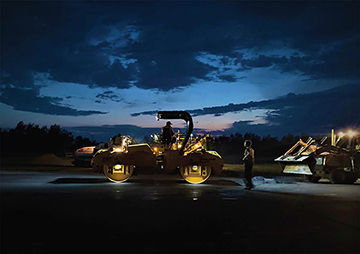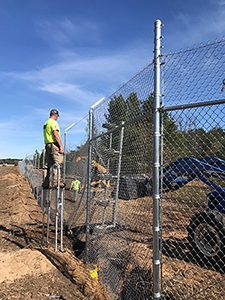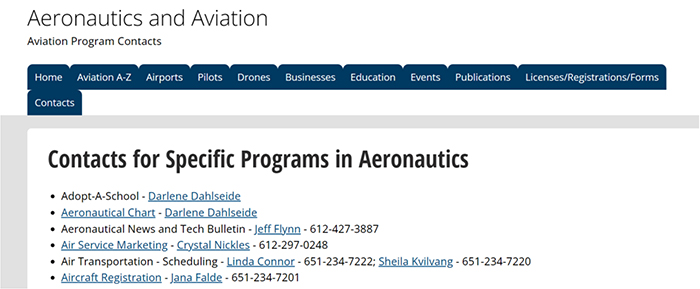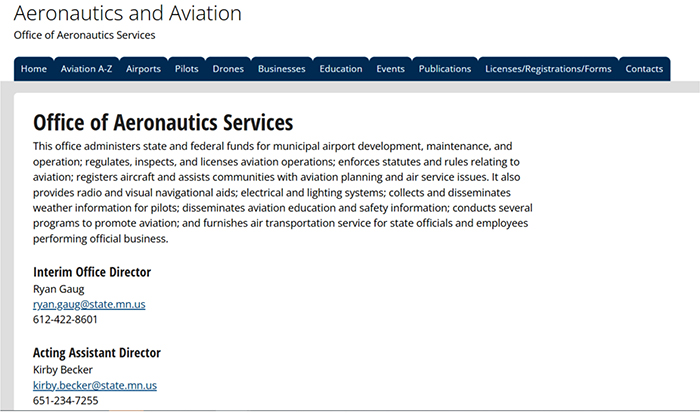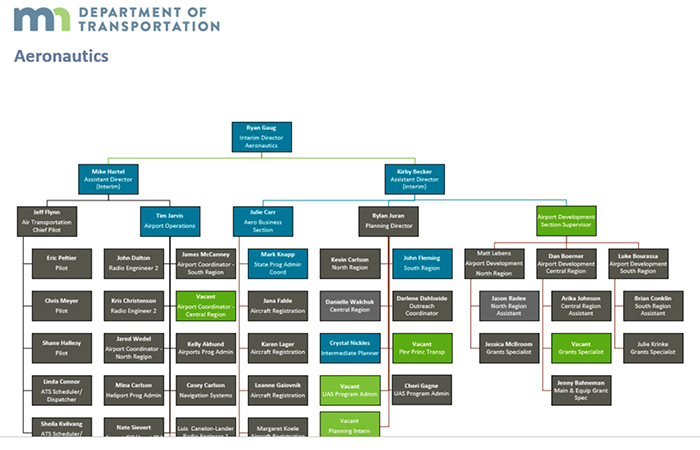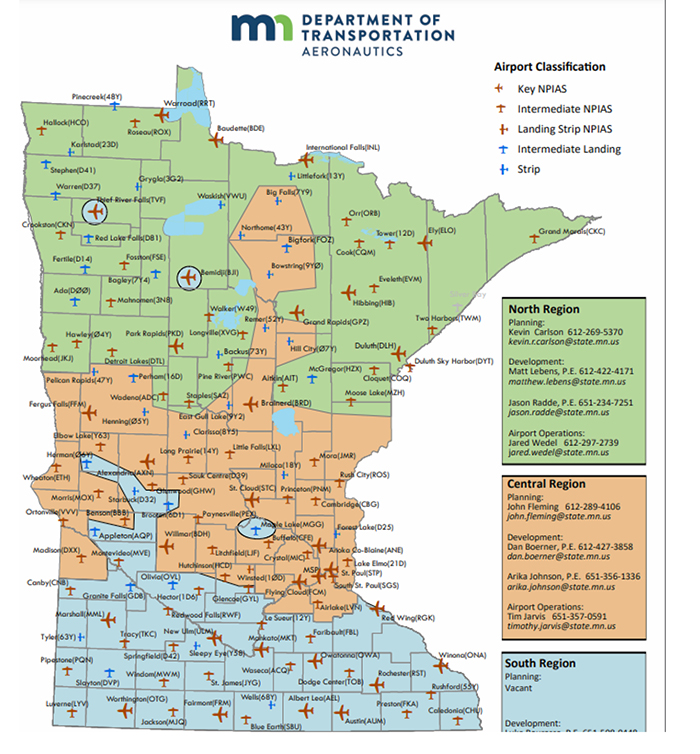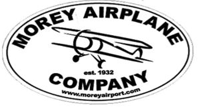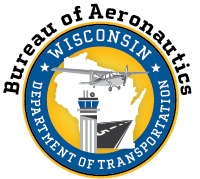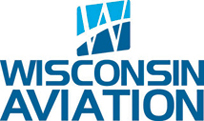
by Dean Zakos
© Dean Zakos 2023. All Rights Reserved.
Published in Midwest Flyer Magazine April/May 2023 Digital Issue
“When one teaches, two learn.” – Robert Heinlein
I am sitting, perhaps a little too casually, in the right seat of a Cessna 172 Skyhawk. In the left seat is a young man about to attempt a power-on stall. We are in the practice area, with the airport we departed from on the distant horizon. After two ninety-degree clearing turns, we remain at 2,000 feet above ground level, with just a few scattered clouds above us on a beautiful, late spring day. I have talked through the procedure numerous times and have demonstrated the maneuver for him just a moment ago. Now, it is his turn.
He reduces the throttle to 1500 RPM. Holding altitude, the airspeed needle approaches 70 knots. I ask him to go to full power, remind him to use some right rudder to maintain heading, and pitch the nose up. The stall warning horn comes on. We see only clouds and sky above the instrument panel. “Keep pulling back,” I advise. There is a buffet, then the stall breaks and the nose slices down through the horizon. The left wing dips. Suddenly, it drops out of sight, and we wing over into a spin.
I did not catch it in time.
Loose objects float through the air. The earth, a patchwork of fields, small ponds, and country roads, now fills the windshield – and it is rotating. Did he apply right aileron hoping to pick up the left wing? Did he intentionally put pressure on left rudder? Using my eyes, I was following through with him on the controls. What did I miss? No time to think about that now.
“My airplane,” I say calmly. “Your airplane,” he blurts out excitedly as he relinquishes the controls. Quickly pulling the power to idle, I return the ailerons to neutral, touch the right rudder pedal to counteract the direction of the spin, and then push forward on the yoke. Once flying speed is regained, I begin to raise the nose of the Skyhawk back to level flight and advance the throttle. We did about a spin and a half before recovering. This does not happen often to me but, over the years, it has happened once or twice before. “Let’s try that stall and recovery again,” I say reassuringly to my student.
I am a Certified Flight Instructor. I am not “building time.” I am not planning on an eventual airline career. I simply want to teach people to fly. I have always wanted to do that. I gladly would do it full time if I could, but I need a job that pays (with benefits) to make life financially stable for myself. So, during the week I am gainfully employed elsewhere, but that vocation allows me to sit in an airplane and instruct on weekends and some evenings. You can guess which job I enjoy more. I have been told it shows.
I have shared with a few close friends that when I started out instructing many years ago, I should have paid my first five students instead of them paying me. I learned that much – and I am still learning with every flight.
I was interested in flight almost from the beginning of my life, starting with small gliders made of styrofoam or balsa wood purchased for me by my grandfather at the local Ben Franklin store. When I was eight years old, I had a paper route that allowed me to make a little money. Naturally, when I saved up enough, I brought home from the hobby shop a line-controlled, gas-powered Fairchild PT19 model with a blue fuselage and yellow wings. Over long summer days, I spun myself dizzy as the small, low-wing aircraft, colorful and noisy against the clear sky, made tethered circles around me in a vacant field. I always imagined that it was me inside the cockpit at the controls of that PT19.
Someday, I thought.
As a sophomore in college, a complete stranger in one of my classes approached me and asked if I would like to go flying. That was my first flight in a small plane. The college offered a flight training program, and I signed up as soon as I could. In fact, I signed up for every aviation class offered. I trained in a Piper Warrior. Received my Private Pilot Certificate in 1980.
In 1982, I ran into a health issue and could not renew my Third-Class Medical Certificate. I bought a kit and built a Rotec Rally 2B+ ultralight, happily operating my “flying lawn chair” to satisfy my aviation fix. In 1990, I obtained my Glider Rating, flying a Blanik L13. I also added a Commercial Glider Pilot Certificate in a Blanik L23. Gliders provided the bridge I needed to continue to fly until my medical could get sorted out.
In 1997, I was able to obtain a Third-Class Special Issuance Medical Certificate. The grounding of all VFR aircraft after the September 11, 2001, terrorist attack in New York gave me the incentive to train for my Instrument Rating. That was in 2002. Two years later, I received my commercial ticket, and two years after that, my instructor certificate. I think, in many ways, I have managed to have it all. My day job affords me a living, and my instructing job not only makes flying financially possible, but it puts a little money in my pocket.
I am living the dream whenever I am flying.
Back on the ramp, I talk with my student about the tasks just completed and the series of stalls and recoveries we worked on. We debrief the just-concluded flight, particularly the stall/spin (he did mistakenly jab the left rudder at the stall break), the aerodynamics of the stall becoming a spin, and ways the student can improve performance for the next lesson. The student asks good questions and, despite the unplanned excitement, is engaged and looking forward to going up again.
Flight instructors, over time, should become skilled at reading people, particularly their own students. Not everyone learns in the same way. In addition to understanding the Federal Aviation Regulations, and having the necessary flying skills, a high emotional IQ is a definite plus when teaching someone to fly. What is the personality of my student? How will the student best learn the concepts I must ensure they understand? What motivates him or her? What concerns does he or she have? What do I need to do to see that success is achieved?
I suppose it is similar to being a coach of an athletic team. I have to be perceptive enough to know when someone is on their game or when they are not at their best. I need to give encouragement when deserved and constructive criticism when warranted.
I have taught many students from different walks of life. Although no two students are alike, I can venture to make some generalizations.
Engineers easily “get” the aerodynamics of flight, but sometimes drive me crazy because they are so precise. Where a short answer suffices with most students, engineers want all the details. Dentists are also detail oriented, as are lawyers. Doctors and CEOs have been some of my worst students. Not all. It is a mixed bag. There are those who have college or professional degrees or have attained status in the business world and, sometimes, they want to tell me how to fly. A few want only to meet minimum standards, and quickly, so they can add the Private Pilot Certificate to their impressive list of accomplishments. Young people, especially teenagers, can be the easiest to teach. Whether someone is a plumber or a PhD, if they bring passion and commitment, I can teach them to fly.
Aggressiveness and overconfidence are simple to spot in a student and, often, are correctable. It can be much more difficult for an instructor to recognize fear. A student may be adept, for a while at least, at hiding his or her fear. It can masquerade as a reluctance, or a deferral, or conceal itself behind a false projection of bravado. Often it only makes itself known in the moment, as I step out of the airplane after informing the student he or she is ready to do some take-offs and landings without me sitting at their side; or when performing a stall, when the nose drops, and the student, instead of reacting, curls up into a fetal position in the left seat; or when a student freezes in the landing flare, unresponsive and staring out into space, as we are rapidly losing airspeed and eating up runway eight feet in the air.
I have lost some good pilot friends to accidents over the years. If you fly, you probably have lost some friends too. The statistics, trending over time, show that general aviation pilots are as safe or safer now than they have ever been. However, there will always be risk in flight. It can never be completely eliminated. It can be mitigated but, if a pilot makes a serious mistake, the result can be unforgiving and tragic. I tell my students exactly that.
Risk will not deter me from fulfilling my dream and doing what I love. I do not pretend to understand life’s mysteries or the cruel reality of random chance. I can only control what I can control. I must put my faith and trust in my own knowledge, my flying skills and experience, and the airplane I fly, come what may.
I think the first few lessons are the most critical for my students. Understanding and learning maneuvers – climbs, turns, straight and level flight, and descents – set them up with the fundamentals they need for everything that comes after. I prefer to teach in a tailwheel aircraft or a high-wing aircraft, as it makes it easier for the student to see things like adverse yaw in an uncoordinated turn. Do not get me wrong… I like flying low-wing aircraft. But give me a Piper J-3 Cub or an Aeronca Chief, or a Cessna 152 or 172, for primary instruction.
It is the middle of a Saturday for me, a day that started with my first lesson at 8:00 am and continuing with the current lesson, having commenced at 10:00 am, just concluding now. I am going to grab a bite to eat, and then prepare for the next appointment in the book at 2:30 pm. My wife, who is understanding and supportive of what I do, will meet me at the FBO with a brown bag lunch she prepared. Later in the day, I am scheduled for a Flight Review with a pilot in his beautifully restored Cub flying off a nearby grass strip. If you instruct, you know. There is ample downtime in many flight instructors’ schedules. Equipment failures, 100-hour inspections, weather, scheduling conflicts, and no shows are, if not a constant, at least a normal part of teaching student pilots in the general aviation world.
I enjoy endorsing my students’ logbooks for their checkrides. My pleasure comes from my confidence in, and expectation that, my students will do well. I let them know that the Designated Pilot Examiner (DPE) is not going to be looking for ways to fail them, but for ways to pass them. A DPE should, within the limits of the Airman Certification Standards, want the student to succeed. I certainly do. When one of my students passes the checkride, I want to be able to say to myself, and to know in my heart, that I did all I possibly could to provide that new pilot with everything he or she needs to fly safely and competently.
I am asked to do quite a few Flight Reviews. Tricycle gear, taildraggers, complex, low-wing, high-wing, experimentals, antiques, classics – I have experience in all of them. Generally, I can tell by the time we start rolling down the runway if a pilot is proficient and he or she will meet the standards. Does he use checklists? Does she understand the systems in the aircraft she is flying? Apply right rudder when going to full power? If I ask about airspace or operating regulations, do I receive mostly a blank stare? I can easily decipher who is motivated to become a better pilot, and who is disinterested, seeking only the sign-off, secretly hoping they are quizzed, and pressed, and challenged on the ground and in the air, as little as possible. If a pilot cannot meet the standards, I cannot and will not sign them off.
I am sometimes asked if I ever tire of doing “touch and goes” in the pattern. Here is my answer.
I am sitting in the right seat again. My student is doing touch and goes. We have been practicing them for a few weeks. From her first lesson, she has been eager and capable. She shows up, on time and prepared, and is ready for each anticipated task or maneuver. She has done the homework.
It is late in the afternoon. The setting sun makes long, dark shadows of trees and buildings on the ground below as we fly over. Rays of soft light are illuminating the rear and side windows of the Skyhawk’s cockpit. As we turn downwind, sunlight and shadows dapple and shape-shift as they move around the interior walls and across the instrument panel.
At pattern altitude, there is a little wind from the south, about five to seven knots. Will she notice it? She does. She causes the nose of the aircraft to move to the right a few degrees, crabbing the aircraft into the wind to correct for the drift. Her track keeps the C172 neatly parallel to the runway. There will be a tailwind when she turns base. Will she anticipate it and compensate? She does, making the base to final turn early so that, as she levels out, she is directly on the extended runway centerline. I have not said a word to her but, sitting next to her with my arms folded across my chest, I smiled as she made each correct decision.
On short final, completely in control of airspeed and rate of descent, she says to me over the intercom, “I know I have the runway made. I’m going to close the throttle.” “You are the Pilot in Command,” I respond. She slowly closes the throttle and, a moment later, we are gliding over the runway threshold and into the flare. Left wing slightly low, she uses rudder to stay centered and aileron to manage any drift. She is neither too hurried nor too casual. She allows speed to drain off, then barely increases the pitch angle. The spring-steel mains of the Cessna touch gently and quietly. She holds the pitch angle for a moment, then the nose wheel kisses the pavement’s centerline.
Her pattern, radio work, and landing were close to perfect. I taught her that.
“Okay,” I say. “How about another one.” Flaps up, trim set, throttle deftly to full power, right rudder, we are once again climbing into the early evening sky.
That is why I never tire of pattern work.
When my students are successful, I feel that I am successful. I believe the work I do at my small airport, although often perceived by the public as an incidental and insignificant part of the aviation world, is extremely important. Good primary flight instruction is fundamental to everything a pilot does thereafter. It is the foundation for student pilots – and for the entire GA system. Good skills, good habits, and good judgment start with a primary flight instructor.
Many of my students have gone on to success in aviation – additional ratings and endorsements, commercial or corporate careers, the military, and ATPs flying for the airlines. I know I will never be in the hall of fame, but I am pleased to have chosen to be an essential part of aviation.
Rumor has it that a former student of mine, now flying as a Captain for United Airlines, recently purchased a Fairchild PT19, blue with yellow wings, to have some fun on weekends.
I think I will give him a call and ask if he wants to go flying.
EDITOR’S NOTE: Dean Zakos (Private Pilot ASEL, Instrument) of Madison, Wisconsin, is the author of “Laughing with the Wind, Practical Advice and Personal Stories from a General Aviation Pilot.” Mr. Zakos has also written numerous short stories and flying articles for Midwest Flyer Magazine and other aviation publications.
DISCLAIMER: Mr. Zakos’ articles involve creative writing, and therefore the information presented may be fictional in nature, and should not be used for flight, or misconstrued as instructional material. Readers are urged to always consult with their personal flight instructor and others about anything discussed herein.








